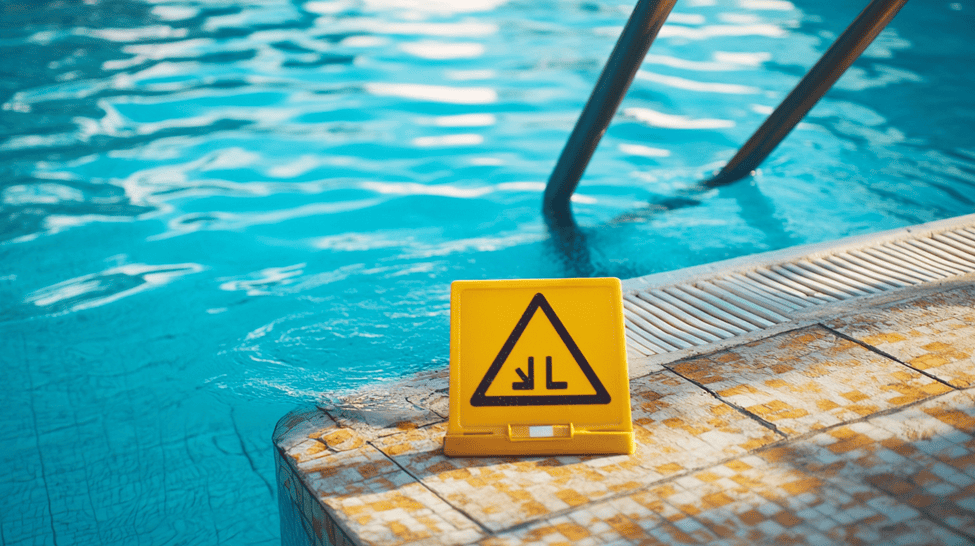8730 Wilshire Boulevard, California 90211
Get Help Now
8730 Wilshire Boulevard, California 90211
Get Help Now

Nationwide, unintentional drownings are the leading cause of death for children between 1 and 4 years old. Drowning is the most common swimming pool injury. But it’s not the only one, and in many cases, it’s not the most serious one. A few minutes below the water could result in a permanent brain injury. Bacteria and other hazards are equally as dangerous.
As outlined below, the legal issues in these cases are often complex, especially in California. This complexity underscores the need for a good Los Angeles personal injury lawyer. An attorney quickly evaluates your case and explains your legal options. Whatever the path, the goal is always the same. These victims deserve both compensation and justice.
Lack of supervision is at the root of many swimming pool injury claims. This inattention could be neglect of swimmers or neglect of the pool itself. In terms of legal responsibility, California law recently changed on this point. All owners have a legal duty to all visitors. It doesn’t matter why they are there or how they got there. The exact extent of this duty varies, based on factors like:
Assume Jessica ventures into an indoor hotel pool area without her parents. The door is locked, but the lock is broken. Jessica goes in the deep end and drowns.
In this case, all the aforementioned factors point to the hotel’s legal responsibility. Kids are drawn to swimming pools like moths to a flame. The hotel exclusively controlled the pool area and locks are very easy to install. The only question is the hotel’s knowledge of the defect. More on that below.
Now assume Michael sneaks into a homeowners’ association community pool after hours. The HOA contracts with a firm which runs the pool. Although the community is gated and locked, there’s a gate but no lock at the pool.
The factors aren’t as favorable in this situation. There’s still a high likelihood of a serious injury. But the pool has limited access because of the community gate, and the HOA does not exclusively control the pool area. There’s also a question of whether the pool gate was inadequate (defective).
Evidence of knowledge can be direct or circumstantial. Direct evidence usually means a repair invoice or another smoking gun. Circumstantial evidence usually involves the time-notice rule. If the hazard existed a long time, the owner should have done something about it.
If a defective product caused the injury, the product manufacturer is strictly liable for any resulting injury. There are basically two types of product defects:
Design defects are fairly self-explanatory. Manufacturing defects usually involve cheap materials or shoddy manufacturing, shipping, or other practices which render the product unsafe.
As for owner liability, inadequate personal supervision usually causes swimming pool drownings.
Incidentally, warning signs, like “No Lifeguard On Duty,” do not derail compensation claims. Full compensation is still available, unless the insurance company proves the victim saw the sign, could read it, and could understand what the sign meant.
Defectively-designed or manufactured drains are a problem as well. If the drain is too strong, it causes an invisible riptide. These riptides almost literally pull swimmers under the water. These hazards are especially dangerous for medium-skilled swimmers. These individuals can swim into deep water but cannot fight hazards like riptides.
In both cases, compensation in a swimming pool accident claim usually includes money for economic losses, such as medical bills, and noneconomic losses, such as pain and suffering.
Owners do not only have a duty to watch swimmers. They also have a duty to keep the pool clean. This activity requires a proper amount of chlorine. Not enough chlorine, and dangerous bacteria could grow in the pool. Too much chlorine, and swimmers could sustain serious chemical burns.
Bacterial infections and chemical burns are especially bad news for people with pre-existing conditions. Full compensation is available in these cases. Insurance companies cannot use victims’ vulnerabilities as a reason to reduce or deny compensation.
When chlorine mixes with water, it forms a poisonous gas. This gas is usually not fatal, unless it’s very concentrated. But it can cause serious lung or other injuries.
Swimming pool pumps normally control the chlorine/water balance, so these clouds cannot form. So, if the pump is not working properly, serious injury is a definite possibility. If a design or manufacturing defect adversely affected the pump, the manufacturer is responsible for resulting injuries. A day at a swimming pool could quickly become tragic. For a free consultation with an experienced personal injury lawyer in Los Angeles, contact Attorney Sharona Hakim at the Law Offices of Eslamboly Hakim. We handle matters throughout California.
Image Credit: Storyblocks
Tag: